Introduction: Life Beneath the Waves
When we think of gardens, most picture lush meadows or colorful flower beds. Yet beneath the surface of the ocean lies one of the largest, most diverse gardens on Earth. Oceanic plants—from microscopic phytoplankton to towering kelp forests—not only sustain marine ecosystems but also regulate Earth’s climate and provide oxygen for us to breathe.
The Role of Plants in Marine Ecosystems
Ocean plants form the foundation of the marine food web, producing oxygen, absorbing carbon dioxide, and offering shelter to marine species. Without them, the ocean would collapse into a lifeless expanse.
Why Ocean Plants Are Essential for Earth’s Health
- Produce up to 50–70% of Earth’s oxygen
- Absorb large amounts of carbon dioxide
- Provide food and habitats for fish, turtles, and marine mammals
What Defines an Ocean Plant?
Not all “plants” in the ocean are true plants.
True Plants vs. Algae
- True plants: Seagrasses and mangroves (with roots, stems, leaves, flowers).
- Algae: Seaweeds like kelp, red algae, and green algae (lacking roots but still photosynthetic).
How Ocean Plants Adapt to Saltwater
They have unique adaptations like salt-excreting leaves, buoyant structures, and flexible stems to survive waves and salinity.
Read more – Top 10 Underwater Plants That You Never Knew
Major Types of Oceanic Plants
1. Seagrasses – The Meadows of the Sea
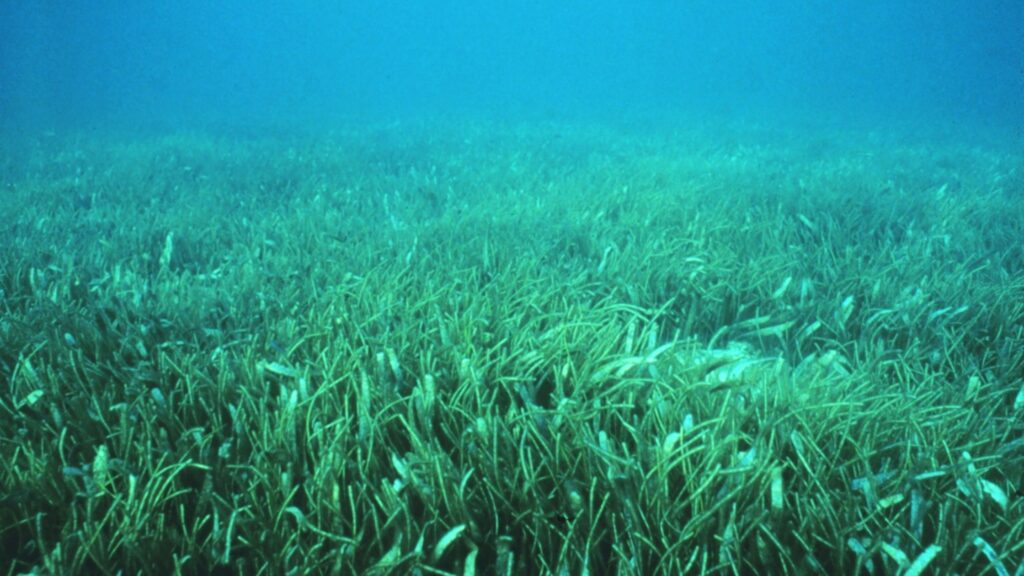
Seagrasses grow in shallow coastal waters, forming underwater meadows.
- Species: Turtle grass, eelgrass, manatee grass.
- Importance: Provide nurseries for fish, protect shorelines, and stabilize sediments.
2. Kelp Forests – The Giants of the Ocean
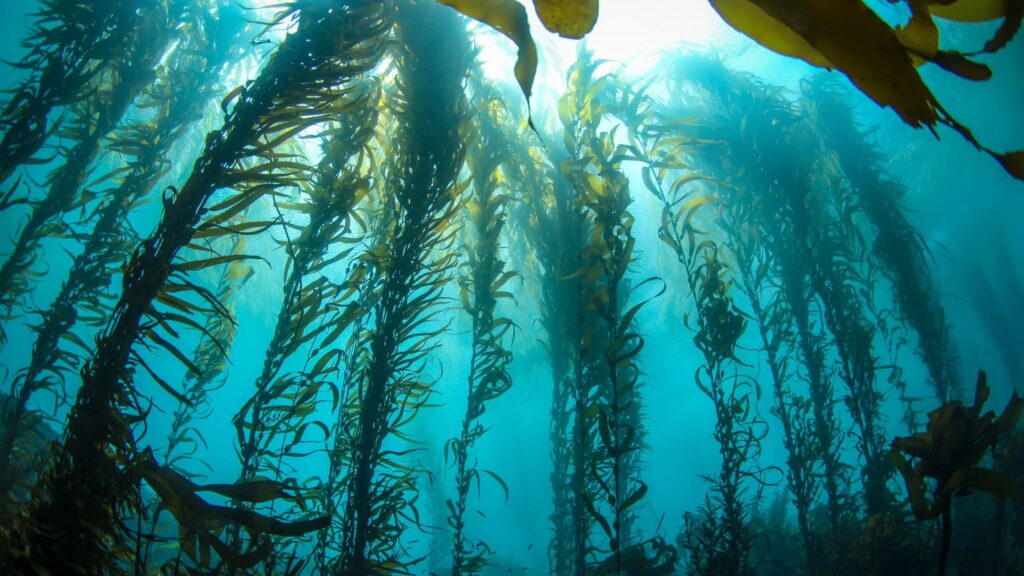
Kelp, a type of brown algae, can grow up to 2 feet per day, forming dense underwater forests.
- Importance: Offer habitats for otters, fish, and invertebrates.
- Regions: Cold, nutrient-rich waters like California and Chile.
3. Phytoplankton – Microscopic Powerhouses
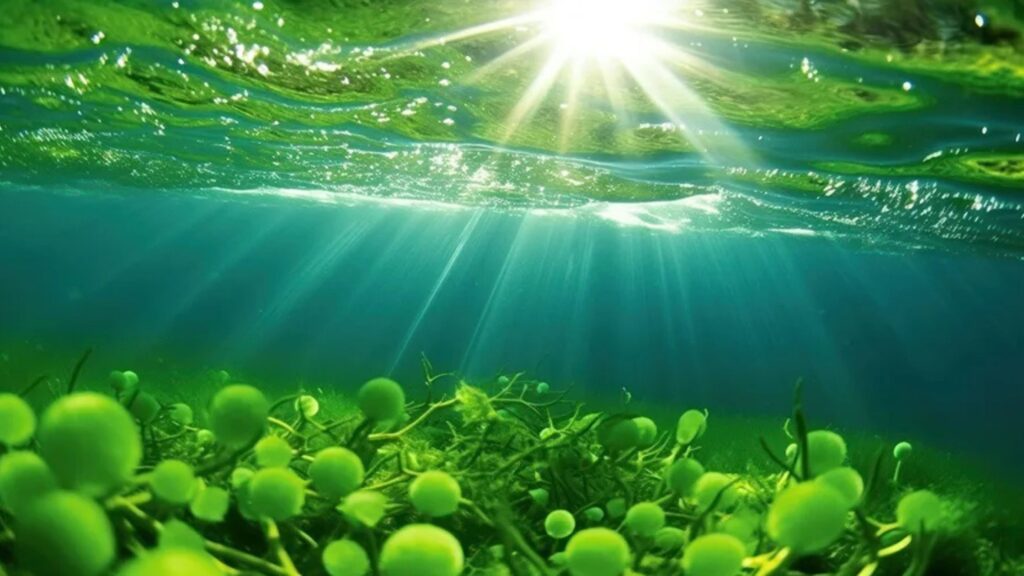
Though invisible to the eye, phytoplankton produce more oxygen than all the world’s rainforests combined.
- Role: Base of the food chain, feeding zooplankton, fish, and whales.
- Climate impact: Absorb CO₂ and store carbon in the ocean floor.
4. Mangroves – The Coastal Guardians
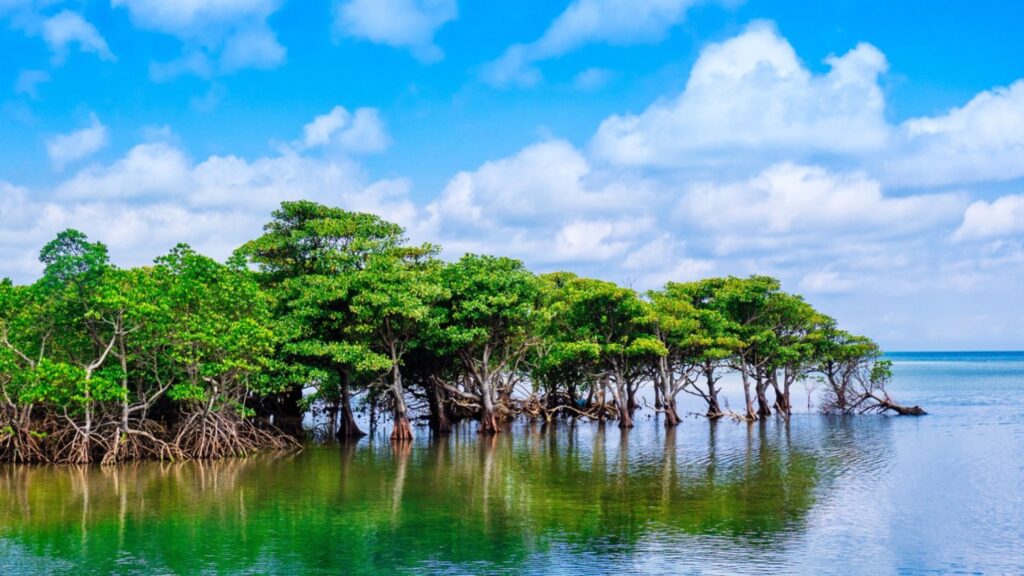
Mangroves are salt-tolerant trees found in tropical coastlines.
- Root systems: Trap sediments and protect coasts from erosion.
- Importance: Provide nurseries for shrimp, crabs, and juvenile fish.
5. Red Algae – Builders of Coral Reefs
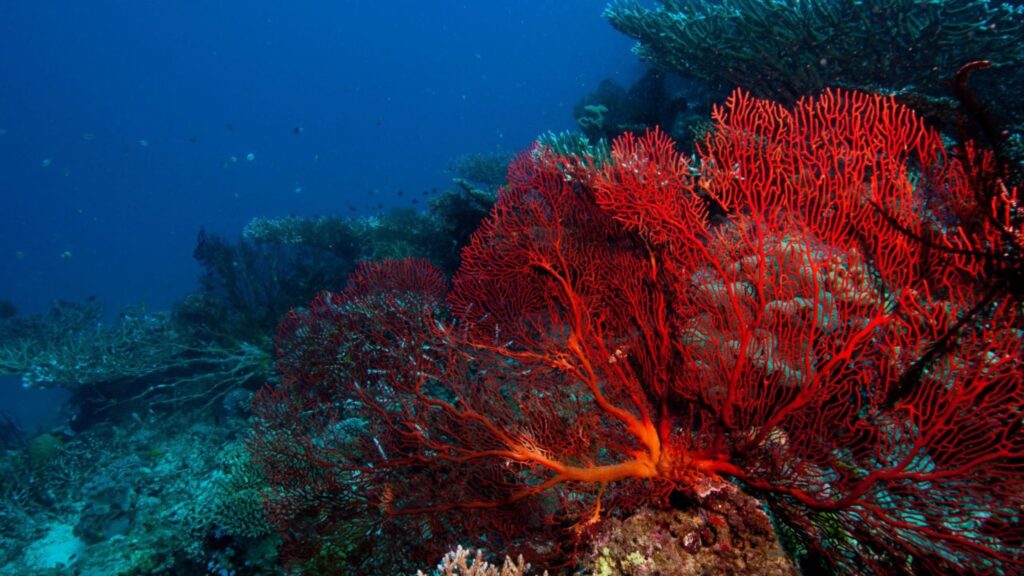
Red algae contribute to reef-building by depositing calcium carbonate.
- Uses: Source of agar and carrageenan in food and cosmetics.
- Ecosystem role: Strengthen coral reefs.
6. Green Algae – Ocean’s Versatile Plants
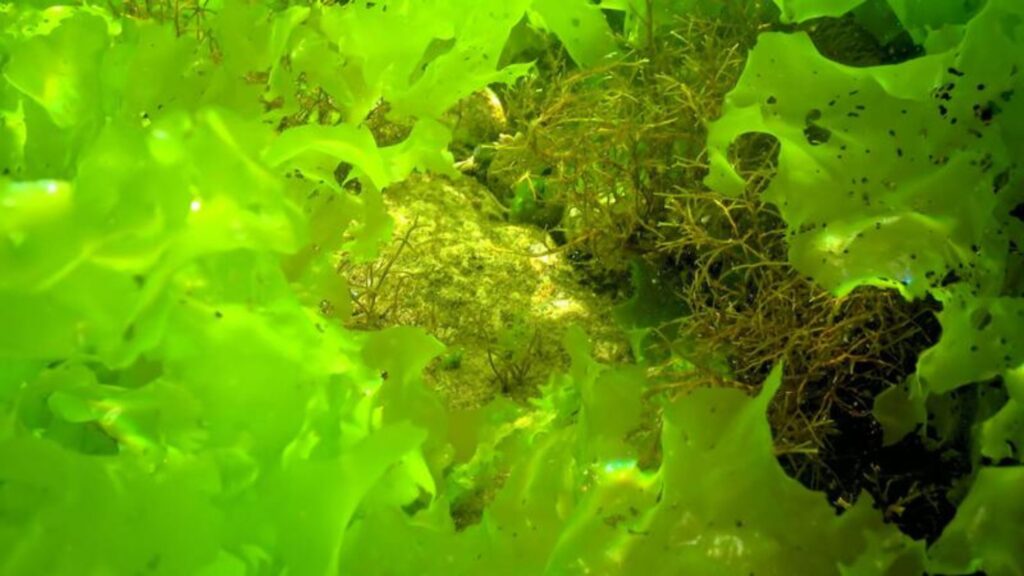
Closest relatives to land plants.
- Species: Ulva (sea lettuce), Codium.
- Role: Food source for fish, humans, and marine invertebrates.
7. Sargassum – The Floating Seaweed

This brown seaweed floats freely, creating vast mats in the Sargasso Sea.
- Ecosystem: Supports unique marine species like baby sea turtles.
- Challenge: Overgrowth in coastal waters disrupts tourism and ecosystems.
How Ocean Plants Support Marine Life
- Oxygen production: Phytoplankton alone supply much of Earth’s breathable oxygen.
- Shelter: Seagrasses, kelp, and mangroves protect fish and invertebrates.
- Food: Everything from tiny shrimp to massive whales depends on ocean plants.
Human Dependence on Oceanic Plants
- Fisheries: Seagrass and mangroves support fish nurseries.
- Medicine: Compounds from seaweed are used in pharmaceuticals.
- Climate regulation: Ocean plants are carbon sinks, reducing global warming.
Threats Facing Oceanic Gardens
- Pollution: Oil spills, plastic, and chemicals kill marine plants.
- Climate change: Rising sea temperatures bleach algae and kill seagrass.
- Overharvesting: Seaweed farming, if unsustainable, depletes habitats.
Conservation Efforts for Oceanic Plants
- Marine Protected Areas (MPAs): Safeguard ecosystems from overfishing and pollution.
- Restoration projects: Seagrass planting and mangrove reforestation.
- Sustainable practices: Eco-friendly seaweed farming.
Protecting Earth’s Underwater Gardens
The ocean’s gardens—from towering kelp forests to tiny phytoplankton—are vital for marine ecosystems and human survival. They produce oxygen, absorb carbon, and sustain marine life, making them the unsung heroes of our planet.
Protecting these oceanic plants is not just an environmental duty—it’s a matter of survival for all life on Earth. 🌊🌱





